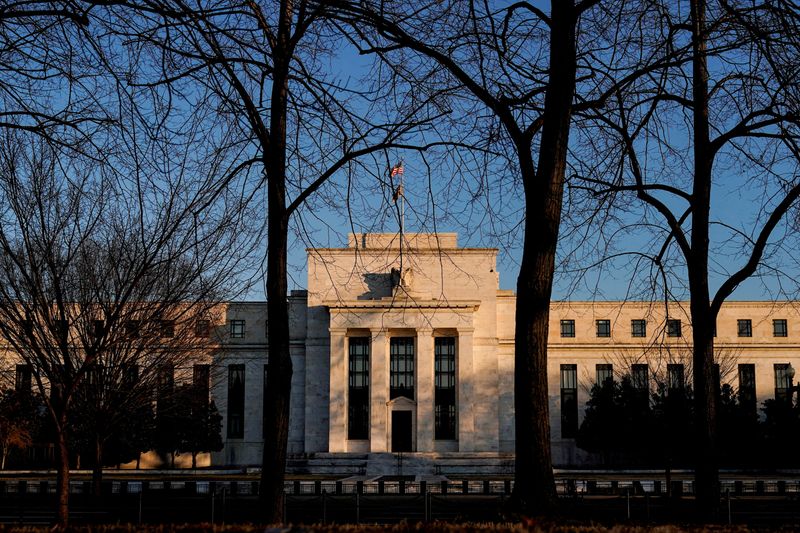By Indradip Ghosh
BENGALURU (Reuters) - The U.S. Federal Reserve will hold interest rates steady on Jan. 29 and resume cutting in March, according to a slim majority of economists polled by Reuters, as policymakers digest an expected barrage of new economic policies from Washington.
The latest survey, taken in the week before U.S. President-elect Donald Trump's inauguration on Jan. 20, also suggests lingering inflation pressures may only allow the Fed to cut rates once more.
Concerns around Trump's pledges, ranging from across-the-board tariffs, extending tax cuts, to deportations of illegal immigrants, have already contributed to a dramatic rise in U.S. Treasury yields before he takes office.
The outlook for an already-strong economy and the Fed's future rate path will depend on how aggressively the incoming administration follows through on those pledges.
"If they deliver anything close to what they promised on the tariff front, then we are going to probably see a stalling of disinflationary pressures, where the Fed is not going to be cutting," said Jonathan Millar, senior U.S. economist at Barclays (LON:BARC).
"At least at a minimum, not as rapidly as they did in the last fall, but also the possibility they could be on hold for quite a while."
Millar was one of the top forecasters for the U.S. in Reuters polls last year, according to LSEG StarMine calculations.
Since the Fed last cut rates in December by a quarter-percentage-point inflation has fallen and the job market had a blowout month in December, suggesting further economic stimulus may not be required for an economy which is already firing on all cylinders.
All 103 economists in the survey predicted the Federal Open Market Committee (FOMC) would keep its key interest rate steady at 4.25%-4.50% at the Jan. 28-29 meeting. A near-60% majority of economists, 61, expected the Fed to cut in March.
Nearly 65% of economists, 65 of 102, anticipated two or fewer rate cuts this year. That flipped from three or more, a view economists had held on to since August 2024.
Interest rate futures pricing has reversed in recent weeks to just one Fed rate cut this year with chances of a second one hanging on a knife's edge from expectations for at least three a month ago.
According to the poll, the fed funds rate will be 3.75%-4.00% by end-2025, much higher than 3.00%-3.25% predicted a few months ago.
But the chances of a prolonged pause are increasing amid concerns potentially imminent policies, especially big tariffs on the country's largest trading partners, could reignite inflationary pressures.
While poll medians showed inflation would remain above the Fed's target of 2% at least until 2027, a strong majority of economists - 40 of 49 - said inflation would more likely be higher than they expected this year rather than lower.
"We expect the FOMC to be confronted with a pickup in inflation associated with the new administration's tariff, immigration and fiscal policies," said James Egelhof, chief U.S. economist at BNP Paribas (OTC:BNPQY).
"Coming right on the heels of the high inflation of the post-pandemic recovery, we see (an) elevated risk that above-2% inflation becomes entrenched in the economy, leaving the FOMC pursuing a more cautious path to manage this risk."
The U.S. economy will expand 2.2% this year and 2.0% in 2026, faster than what Fed officials currently see as the non-inflationary growth rate of 1.8% over the coming years, the poll found.
Still, an overwhelming majority of respondents, 43 of 49, said a Fed rate hike is unlikely this year.

"Strong growth ought to add to the inflationary pressure from tariffs and immigration restrictions, putting rate hikes firmly back on the table. But this should be more of a story for 2026, with a wait-and-see approach more appropriate this year," said George Brown, senior U.S. economist at Schroders (LON:SDR).
(Other stories from the Reuters global economic poll)